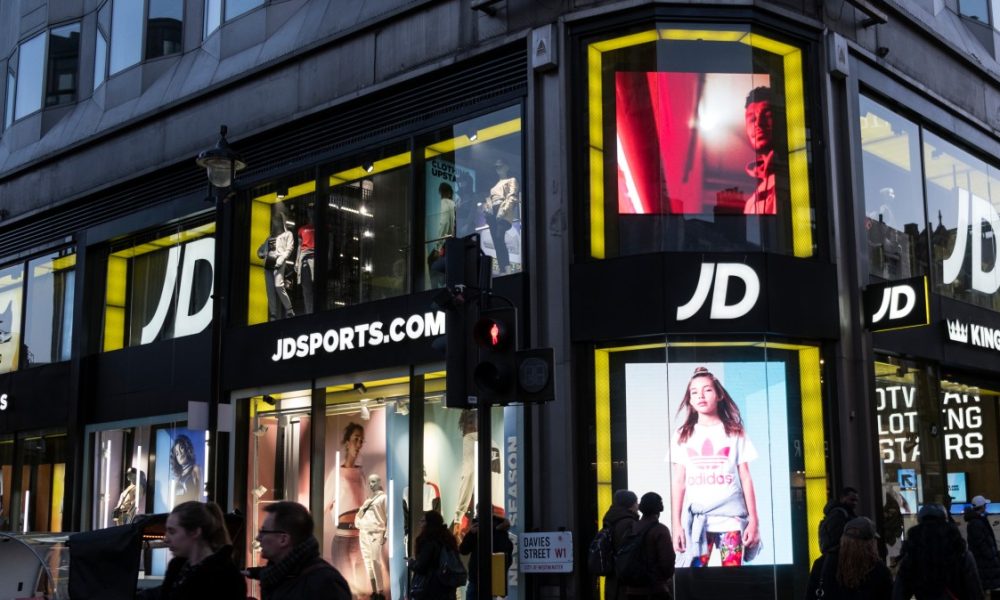Technology
JD Sports warns over US tariffs as profits fall
Elevated US tariffs could force JD Sports Fashion to raise prices for American consumers after it posted a fall in annual profits and flagged continued “volatility” in the global sportswear market. Shares in the FTSE 100 retailer fell 9 per cent on Wednesday after it warned President Trump’s new trade barriers in the United States […]

Elevated US tariffs could force JD Sports Fashion to raise prices for American consumers after it posted a fall in annual profits and flagged continued “volatility” in the global sportswear market.
Shares in the FTSE 100 retailer fell 9 per cent on Wednesday after it warned President Trump’s new trade barriers in the United States had affected the group in three areas: the global economy and consumers, brand partners, and goods and services not for resale.
The sportswear giant, which generates about 40 per cent of its sales in America, warned that the “potential impacts are on consumer confidence and, in the short term, the cost of goods and services for US customers may rise to some degree with a potential impact on overall consumer demand.
“We consider this to have the largest potential impact on the group,” it added.
JD Sports said it was taking action to mitigate any potential impact “through further diversifying the range of countries from which we source own brand and licensed products, continuing to work closely with our brand partners and ongoing cost control”.
The warning came alongside JD Sports’ full-year results, which showed pre-tax profits had fallen 11.8 per cent to £715 million in the year to February, from £811 million the year before. The drop was a result of increased costs associated with its buy-ups of rival chains Hibbett in the US and Courir in Europe, as well as extra spending on cybersecurity measures.
The company delivered profit before tax and adjusting items of £923 million, in line with guidance.
Group revenue rose 8.7 per cent to £11.5 billion during the same period, while like-for-like sales grew by 0.3 per cent.
Régis Schultz, the chief executive, said trading in the first quarter of the new financial year had “been in line with our expectations in a volatile market”.
JD has been among the hardest hit by the sector-wide reset in the sportswear market, with key suppliers such as Nike falling behind more agile rivals. Nike, which accounts for a major chunk of JD’s product mix, has lost ground to newcomers such as On Running and Hoka, which have gained popularity among fashion-conscious and performance-driven consumers.
The company said it continued to operate in a “volatile and promotional market, particularly online”.
JD Sports warned in January that it did not expect any growth in sales at established stores during the year and warned that annual profits would be no more than £935 million, down from previous hopes of between £955 million and £1.03 billion.
Despite the decline, Peel Hunt analysts reiterated their “buy” rating. They said JD was an “exceptional business that has made the odd mistake and been hammered by external factors. We believe the current multiple is far too low for a market leader with growth prospects and cash on the balance sheet.”
Shore Capital, the broker, said that “while the challenging market conditions in the US remain a concern, we see positive in the strategic direction of the company, the price discipline reflected in maintaining gross margins, and by the ongoing strong cash generation.”
Shares in JD Sports were down 9p, or 9.7 per cent, to 84p. The stock has fallen by about 30 per cent over the past year.